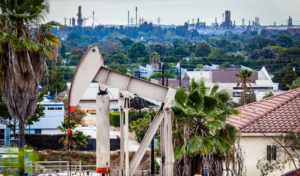
Despite criticism, the Biden Administration’s drilling approvals have had little impact on current prices.
Following the outbreak of war in Ukraine, gas prices in the United States hit an all-time high at the beginning of March. U.S. House Minority Leader Kevin McCarthy (R-Calif.) and other Republican politicians blamed the soaring prices on President Joseph R. Biden’s energy policies. McCarthy criticized the Biden Administration’s failure to issue sufficient “oil and gas leases on federal lands and waters” and called for politicians who would “get out of the way” of U.S. oil and gas development.
But the impact of the Biden Administration’s policies on gas prices is far more complicated than McCarthy’s criticism suggests.
Although legal battles surrounding the Biden Administration’s oil and gas leasing and permitting may have caused some impacts on production, industry analysts suggest market forces have had a much larger impact on current production and prices.
Following his inauguration, President Biden issued an executive order that temporarily paused the issuance of new leases on federal lands and waters until the U.S. Department of the Interior completed a review of the leasing and permitting program. The Interior Department released its report reviewing the program at the end of November.
Before the Administration released the report and lifted the pause, however, the state attorneys general for Louisiana and several other states challenged the leasing pause in court. The court sided with the states and issued an order preventing the Biden Administration from continuing the leasing program pause.
To comply with the court, the Bureau of Ocean Energy Management (BOEM)—an agency within the Interior Department that manages leases for drilling on federal lands—auctioned off leases covering 1.7 million acres in the Gulf of Mexico. The auction was the “largest offshore oil and gas lease sale in U.S. history.”
Shortly after the sale, however, a federal judge in Washington, D.C. invalidated the sale in a suit brought against the Biden Administration by Friends of the Earth, an environmental nonprofit. The judge reasoned that the lease sale was unlawful because BOEM used a flawed analysis of the sale’s greenhouse gas emissions and the resulting climate impacts.
The plot thickened when states sued the Biden Administration for a second time in a Louisiana district court.
The district judge barred the Biden Administration from using a particular methodology to estimate the impacts of greenhouse gas emissions, known as the social cost of carbon. The states claimed that the Administration’s social cost of carbon calculation was unlawful. They argued that using the social cost of carbon would cause the Administration to issue fewer drilling leases and permits, which would harm the states’ oil and gas development.
Following the judge’s order preventing the calculation of the social cost of carbon, the Biden Administration announced that all “work surrounding public-facing rules, grants, leases, permits and other projects has been delayed or stopped altogether” while the agency assesses how to move forward. Several weeks later, however, the U.S. Court of Appeals for the Fifth Circuit lifted the lower court’s ruling.
In the interim the states had merely achieved a pyrrhic victory. They succeeded in temporarily stopping the Biden Administration from limiting oil and gas development based on the social cost of carbon. Yet, the states’ suits resulted in the Biden Administration pausing all leasing and permitting while it determined how to make sense of all the court rulings. And even then, the circuit court shortly afterward granted the Administration a victory.
Although the legal morass facing the leasing and permitting processes may have had some impact on oil production, experts suggest that market forces are the real culprit driving current oil production and pricing trends.
Many oil producers and financiers are wary of investing too heavily during the profitable periods, only to see their investments wiped out when prices turn lower. The rapid collapse of oil prices in 2014 and then again in 2020 resulted in a large number of bankruptcies. That has led investors and oil companies alike to be far more disciplined in deploying capital in the face of the current rise in oil prices.
One of the country’s biggest fracking companies, Devon Energy, has no plans to increase production in spite of the recent rise in oil prices. Instead, the company will focus on returning capital to shareholders. This appears to be the course many oil producers are taking—who are seemingly unphased by the prospect of $100-per-barrel prices.
In addition to long-term pricing concerns, producers are also facing the same COVID-19-related supply chain and employment issues plaguing other sectors of the economy.
As evidence of these non-regulatory forces, one spokesperson for the Interior Department reportedly noted that a significant number of drilling permits and 60 percent of leased land currently “sits unused.” In fact, the Biden Administration approved more drilling permits in its first year than the Trump Administration, but oil developers are currently using their permits at lower rates.
These considerations paint a more complicated picture than just an Administration hostile to oil and gas. Even if drilling and leasing policies were not tied up in court battles, the lack of drilling seems to be influenced by producers and investors’ concern of decreasing oil prices. There simply is no magic regulatory wand the Biden Administration can wave to increase oil production.



